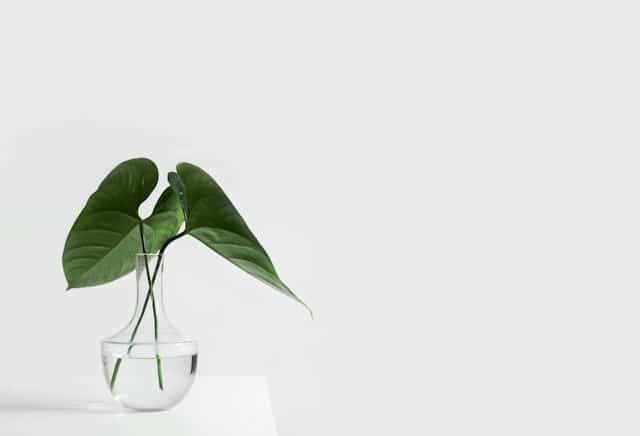The art of minimalism: living more with less

In a world that’s constantly urging you to buy more, achieve more, and be more, the idea of living with less can feel like a breath of fresh air. Minimalism, a lifestyle that encourages paring down to the essentials and finding joy in simplicity, has gained momentum in recent years as a response to the frenetic consumer culture. The minimalist lifestyle isn’t just about decluttering your closet or counting your possessions; it’s about reassessing your priorities so you can strip away the excess and focus on what truly matters. It’s about living with intentionality and purpose, and it can lead to a richer, more fulfilling life. Through minimalist living, you learn to cherish experiences over things, quality over quantity, and find that by owning less, you can actually live more. But how do you embrace this concept in practical terms? Let’s delve into the art of minimalism and discover how living with less can indeed help you live more.
Simplifying life through decluttering
When you hear the word decluttering, you might think of cleaning out a junk drawer or donating clothes you no longer wear. But in the realm of minimalism, decluttering is more than a one-time cleaning spree—it’s a critical step towards simplifying your life. Decluttering isn’t just about physical stuff; it extends to all aspects of life, including your schedule, relationships, and mental space.
A lire en complément : How to choose the ideal interior design firm in Philadelphia ?
Starting with your home environment, removing excess belongings can provide immediate relief from the chaos of clutter. This is not simply about creating a tidy space but about making room for things that add value and joy to your life. The decluttering process often begins by evaluating what you own and asking yourself if each item is either useful or brings you happiness. If it doesn’t, it might be time to let it go.
This process can extend to other areas, such as decluttering your calendar by saying no to commitments that don’t align with your values or goals. It can also mean streamlining your digital life by unsubscribing from emails that no longer serve you or limiting your use of social media. By saying no to the superfluous, you say yes to more time, energy, and peace of mind.
En parallèle : Combining diet pills and a balanced diet: An effective approach to weight loss ?
Adopting a minimalist mindset
Embracing minimalism is more than a series of actions; it’s a shift in thinking. To live a minimalist lifestyle, you must adopt a minimalist mindset. This means reevaluating your beliefs about what you need to be happy and successful. It often involves challenging societal norms and the barrage of advertisements that equate happiness with material possessions.
A minimalist mindset focuses on the essentials of what it means to live a fulfilling life. This often translates into valuing experiences over things, fostering deep relationships, and cultivating a sense of contentment with what you have. It’s about living intentionally and choosing possessions and activities that align with your core values.
Developing this mindset may require you to take stock of your current beliefs and practices. You might find that you’ve been holding onto things, ideas, or even relationships out of habit or obligation. By peeling back these layers, you can discover what truly adds value to your life and make space for it. In doing so, you’ll likely find that you can live more authentically and freely.
The joy of living with less
A key tenet of minimalism is finding joy in living with less. This doesn’t mean living a life of deprivation; rather, it’s about recognizing that happiness doesn’t come from possessions. Instead, joy comes from meaningful connections, personal growth, and the freedom that comes from not being weighed down by unnecessary things.
Living with less frees up not only physical space but also mental space. With fewer possessions to manage and worry about, you have more time and energy to devote to what you love. This can lead to increased creativity, productivity, and relaxation. It’s a liberating feeling to realize that you don’t need much to be content and that in many cases, less is indeed more.
Additionally, living with less can be eco-friendly, as it often involves consuming less and wasting less. This can contribute to a healthier planet and a clearer conscience. By being more intentional about what you bring into your life, you’re also making a statement about the kind of world you want to live in—one that values sustainability over consumption.
The art of minimalism in design and lifestyle
Minimalism is not only a principle for personal living but also a popular aesthetic in art and design. The minimalist design emphasizes clean lines, functional elements, and a "less is more" philosophy. This can be seen in architecture, interior decor, and even digital interfaces.
When you apply the principles of minimalism to design, the focus is on creating spaces and products that are simple, functional, and beautiful. This often results in timeless designs that outlast trends and reduce the need for constant change or upgrades.
In terms of lifestyle, minimalism can influence how you dress, eat, work, and play. A minimalist might choose a capsule wardrobe, simplifying their clothing choices while still expressing personal style. They might prefer simple, wholesome meals that require fewer ingredients and less preparation time. At work, a minimalist approach could involve streamlining processes to improve efficiency. And for leisure, it might mean choosing quality over quantity—opting for one meaningful activity over several less satisfying ones.
Living more with minimalism
Ultimately, the art of minimalism is about living more. It’s about making more room for the things that truly matter—whether that’s family, passion projects, or self-care. By embracing minimalism, you grant yourself the time and space to grow, love, and explore.
Living with minimalism isn’t about a rigid set of rules or about giving up everything you enjoy. It’s a flexible, personal approach that helps you identify what’s superfluous and what’s essential. As you declutter your home and your life, you might find that you’re not just living with less; you’re also living with more purpose, more passion, and more peace.
In conclusion, living more with less is a journey of discovering what contributes to your well-being and happiness. It’s a continuous process of evaluating and reevaluating what makes life meaningful for you. Whether it’s through decluttering, adopting a minimalist mindset, finding joy in simplicity, appreciating minimalist design, or embracing an eco-friendly lifestyle, the essence of minimalism is about focusing on the quality of life rather than the quantity of possessions. By doing so, you can live a life that is richer, freer, and more aligned with your deepest values.
